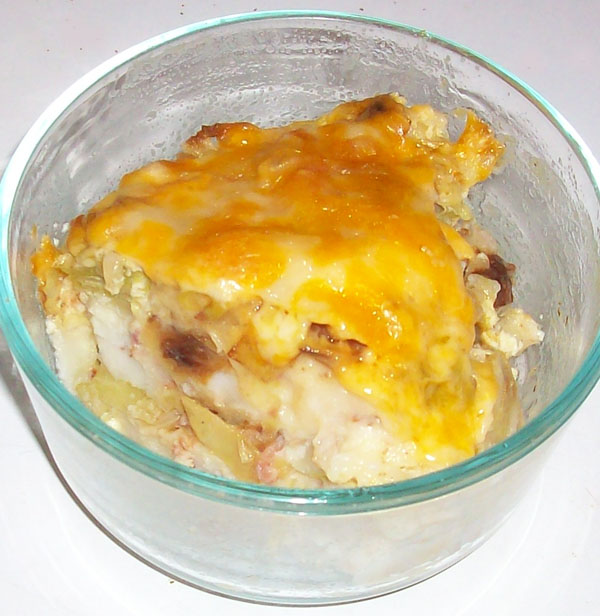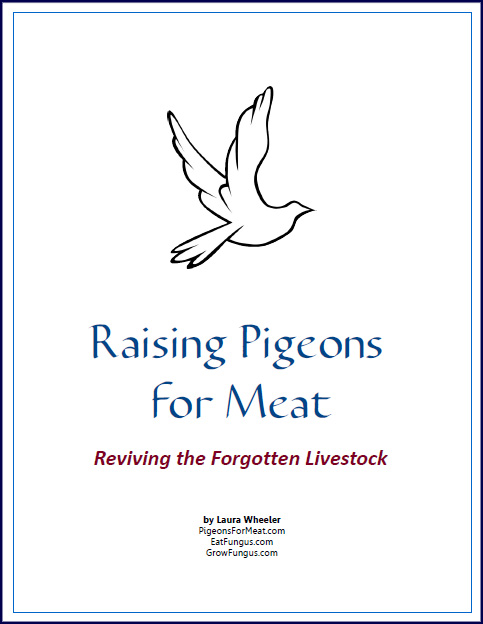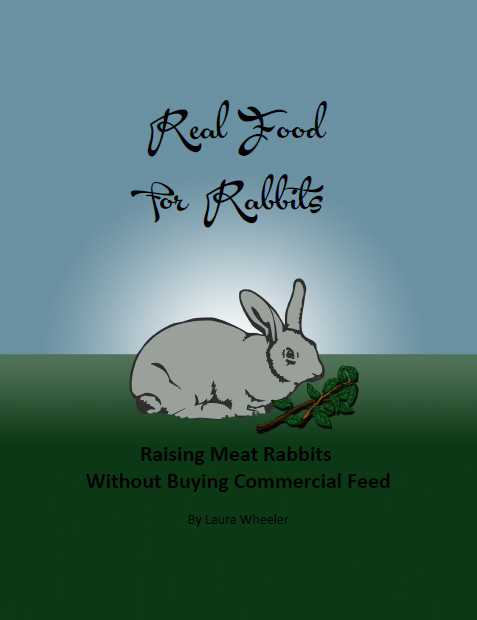Click to Download Your Free Heritage Pickling and Culturing e-Book Now!
Instant Download, NO Registration Required!
Heritage Preserving
Traditional preservation does not actually include canning, but we have included it here, because of the value for preserving seasonal harvests in a simple to use manner.
- We DRY a lot of foods. This is probably the most common traditional preservation method, being used for fruits, vegetables, and meats, and naturally occurring with grains, nuts, and legumes. We don't freeze dry, it is neither economical, nor efficient, and we simply do not have the time or money to fuss with it.
- We FREEZE a lot of foods. Also a traditional method, freezing was used by northern civilizations to store some foods through the winter.
- We COOL STORE some foods. The traditional is a root cellar. We use a basement, or a refrigerator, and sometimes a front or back porch area. Appropriate for potatoes, apples, cabbages, squash, onions, and other similar crops, and for smoked or cured meats.
- We CURE, PICKLE, or CULTURE some foods. Traditionally this is why we have pickles, kraut, cheese, ham, sausage, and other foods that are treated with salt or aged in a way that encourages beneficial microbial growth.
- We SMOKE some foods, in combination with drying or curing. Another longstanding traditional preservation method.
- We DO SOME oil or fat pack foods, but are careful about what we do, because some either do not store long enough to be worth the trouble, or they have too high a risk of deadly peripheral contamination to be worth it.
- We CAN many foods, a lot of them pressure canned, for quick fix, grab and go meals, and to make some meats more digestible (production breed meats are hard for me to digest unless the proteins are changed by cooking processes, and high heat is one thing that works). We are careful about methods used, and pay attention to nutrient loss. We use MANY "not recommended" methods, because our experiences have taught us that the government is not the only, or even the best, arbiter of safety where food is concerned! We use recommendations from around the world, and we learn the science, and figure out WHY things are tricky, and then develop methods for compensating. Our food is good, it is safe, and it is a huge benefit to us every day.
People have been preserving and storing food for as long as they have been eating food. Healthy food preservation is part skill, and part art, but once you get going on it, it really ISN'T all that hard!
Easy Things To Pressure Can
Some things are a pain to pressure can. And you certainly cannot do everything you want. But there are a few things that are SOOO easy, you might as well do them, for the benefit they provide.
1. Raw Meat. Meat is SOO EASY! Cut it up, shove it on the jar RAW, sprinkle a tiny bit of salt over the top, and put the lid on. Bung it into the canner and run the cycle. Easy to use for quick fix - fast and TASTY meaty gravy, fry in skillet with little butter until the meat juice is evaporated and use for pulled brisket with some BBQ sauce on it, fry in skillet same way and put taco seasoning on it, and lots of other really fast uses.
2. Cooked Meat. Very fast, we do this on Thanksgiving and Christmas, THAT DAY to preserve the turkey so it does not get stale tasting. Cut it up, throw it in the jar, add water, and you don't even have to add salt if it is commercial turkey or chicken or other meat that has been injected with brine. Works with cooked pork, beef, whatever.
3. Leftover Soup. Make a BIG pot. Serve it for dinner. Put the leftovers into jars, and can right after dinner. You'll have that delicious homemade soup whenever you need it. Nice way to maximize your cooking time. Don't do this with FLOUR THICKENED foods, it will taste mealy.
4. Chili. Again, make a BIG pot of chili, serve it up for dinner, and can the leftovers. As long as your chili is lightly soupy - in other words it doesn't heap up, it tips sideways in the jar instead, you can can it without fear of it not getting hot enough inside. Just can for SOUP times.
Now... REMEMBER!!! If your soup is HOT then put it into HOT water in the canner. If it is COLD, put it into COLD water in the canner. Warm is the same. Otherwise you may kill your jars with thermal shock. Not fun cleaning THAT up.
These four things ABSOLUTELY JUSTIFY the existence of my pressure canner.
Remember, you can waterbath or steam can in a pressure canner also, so this one canner is ALL YOU NEED!
Contesting Colcannon
Cabbage and Potatoes. Have you ever EATEN cabbage and potatoes mixed together?
Try it.
You WON'T like it!
As a side dish, IT STINKS. Often literally if they have overcooked the cabbage and it has all gone to a sulfurous ill wind.
But here I am, eating Colcannon for the first time, and ENJOYING it. It is a delightful surprise. And yes, I am having this, for lunch, even as I write.
But there are myths about Colcannon.
One is that it is just cabbage and potatoes, and if you are desperate, perhaps it is. (But if I were that desperate I'd eat them separately.)
Colcannon is NOT the poverty dish that Burgoo or Haggis is. But Colcannon is the thing you always have. It is the staples that GET YOU THROUGH The winter.
Colcannon is made of the Preserved ingredients that you use from all winter. The cabbage that lasts until early spring, and the potatoes that HAVE to last all winter long. It has CURED meats, because they store in the attic for many months of winter. It is WINTER food. If they ate it on St. Patrick's Day, they did so because that is what was left at that time of year, of their winter food.
So cabbage and potatoes it MUST have - unless you are one of those weird people that substitutes Rice or Noodles for the Potatoes, or one of those sorry beings who thinks turnips are food, and uses them IN or INSTEAD OF the potatoes. Sorry, no substitute for the cabbage.
Colcannon (Irish and Scots name for it, in Wales, Kolknyn), is now described as a Side Dish, and it isn't meant to be. It is meant to be the Entree. Often the entire meal.
It uses MORE ingredients than are often listed. It is a HEARTY meal when you make it right.
I suppose you want a recipe? Well, I have one. But it isn't the ONLY one.
Just so you can be discriminating, I'll tell you, it should have MORE than just cabbage and potatoes. It should have MORE than just cabbage, potatoes, and onions. And even more than just cabbage, potatoes, onions, and BACON!
It should be so loaded with nutrient dense food, that you eat it and feel satisfied.
So here is MY recipe. It was WELL WORTH making.

Olde Scots Colcannon (Given to me by an Old Scot of the Duncan Clan)
Potatoes
- 2 cups mashed potatoes (with MILK or cream, and BUTTER - LOTS OF BUTTER, and SALT)
- 2 TBSP bacon fat (Do NOT leave this out. Do NOT reduce the amount. Add MORE if you want, but NEVER LESS. It won't be Colcannon if you do.)
- 1/2 package (or more) bacon bits (or fresh fried bacon)
- 1/2 cup smoky ham pieces
Stir together.
Cabbage
- 1 small head of cabbage (should be LESS than the amount of the potatoes - I had a LEETLE WEE cabbage head.)
- 1 small chopped onion
- Optional seasoning salt.
Cook tender in butter. CAUTION... don't overcook the cabbage to gray mush that smells of dog farts. Please. Just keep it sweet and firmly tender.
Egg
- 2 eggs
- 1/2 cup milk
- Sprinkle of seasoning salt and salt.
Stir together.
Layer
Assemble into a casserole dish. Layer Potatoes, and cabbage, and pour HALF the eggs over. Repeat.
Cheese
Wensleydale Cheese is traditional, but Colby, and Cheddar are also frequently used. The funny thing about Wensleydale is that it was NOT a commercial cheese until recently. It was a COTTAGE made cheese, and other than being firm and crumbly, had no defining characteristics other than that it was made in the region and called Wensleydale. Even today, flavors vary widely between manufacturers. So Wallace apparently has a corner deli that makes their own cheese that he frequents.
Top the casserole with a good layer of cheese.
Bake
Bake at 375 degrees for about 45 minutes, or until the egg is set all the way through, and the cheese is melty and browned on the edges.
Serve With
Serve with fresh bread or rolls, and stewed tomatoes or baked beans, or green beans.
Optional Ingredients
- Other cured meats can be used. Smoked Sausage, or bulk savory sausage are good choices.
- Mushrooms may be added.
- Parsnips can be added in a separate layer.
- Carrots can be added with the cabbage (shredded and cooked with it)
- Celery can be cooked in with the cabbage.
Additional Notes
Part of the process of recovering from Crohn's Disease has been learning how to combine foods so they digest and metabolize more easily. The right food combinations can really help in both instances.
The first thing I learned was how to eat eggs and tuna again. Eggs need ketchup or salsa. Tuna needs relish or mustard. If I eat them that way, then I never have indigestion from them, and rarely have anything but mild diarrhea (instead of severe). I also learned to eat beans again - overcooked, and with tomato.
The common factor for meats being acids - fruits, pickles, etc. And cheese. Cheese also works.
Vegetables have been a whole different thing. They don't respond to fruits like meat does. They needed something else.
The first guess was fats. And fats it has been.
Butter, lard, bacon fat, coconut oil, and other fats. But mostly ANIMAL fats. Animal fats supply elements that vegetable fats do not.
And here we have Colcannon. We don't LIKE potatoes and cabbage together, because our bodies can't USE them without other things added.
The bacon fat in the Colcannon is more than just tasty. It is magic. When you put a bite of this into your mouth, your body knows EXACTLY what to do with it. The eggs, milk, cheese, and meat also help round out a more complex digestive and metabolic combination.
From Colcannon, we progress to other foods that are difficult to appreciate. I hear that overcooking, adding butter AND bacon fat, and adding a seasoning salt with MSG can even help people enjoy eating TURNIPS! I'll have to try it some day, when I can grow, or buy, a turnip. Because that is ONE VEGETABLE that I do not eat. So if combining THAT with something makes it edible, we really have a method going on!
So keep trying new foods. Keep trying old foods in new ways. The combinations really do matter, and flavor really does tell your body how to use it.
Irish Farmer's Breakfast
Put the cabbage and potatoes into a skillet, and don't forget the ONION, with bacon fat, or butter.
Add bacon, ham, sausage, smoked sausage, or other savory meat.
Heat and fry lightly.
Add EGGS, and stir in, cook through.
Top with cheese.
Remove from heat and serve.
Scotch Farmer's Breakfast
It can be ANYTHING with potatoes, onions and Haggis.
It can ALSO be potatoes, onions, and cabbage, with Haggis.
Remember, either way, you need SAVORY MEAT, and you top it with cheese.
It is fried in bacon fat, lard, butter, or even tallow or marrow.
And now we another version which has more flavor, but is also made with convenience ingredients.
Patchwork Colcannon
Follow the instructions above, but use these mixtures.
1. Potatoes - Use flavored instant potatoes, in the small packets. You can pick any flavor you love to use in this. Be sure to add 1/4 cup butter to this.
Use Bacon Bits, and SOME KIND of meat dripping. Bacon fat is best, but hamburger, lamb, pork or chicken fat, or even sausage drippings, will do just fine.
2. Cabbage - Use a package of coleslaw mix. Fry it in butter.
Try adding soy sauce instead of salt, for more flavor.
If you don't have fresh onion, and don't have time to reconstitute dried onion, sprinkle in some onion powder or granules.
3. Egg - same mixture.
4. Cheese - same as above. We use packaged shredded cheese.
Welsh Corncannon
This really is a thing! An old Welsh dish, reputedly a favorite of King Henry VIII, and John Lackland (King John III). People the world over love corn and potatoes mixed together, and this Welsh version is a classic.
Potatoes - Stir Together
- 6 baked potatoes, peeled and roughly mashed
- 1/2 lb cooked and crumbled bacon
- Butter AND bacon grease, enough to really see and smell
- Salt, with or without seasoning salt
Corn - Stir Together
- 1 can cream corn
- 1 can whole kernel corn
- 2 eggs
- Salt
Cheese
- 8 oz White Mozzarella
- 8 oz White Cheddar
Assemble in layers, with 2 layers each of potatoes and corn, and top with 1 cheese layer.
Bake at 375 for 45 minutes.
Let Us Not Forget Funger
A Funger Sandwich, we are to understand, is not an enjoyable thing.
It is a funny word, and one which has been all but lost in history. When we know what it is, we know why Tartan bought his friend the dog.
Funger. That stuff in the fridge.
That meal we didn't quite enjoy.
The one nobody really wants to eat as leftovers.
The thing that is CLOSE to being inedible from decay, but NOT QUITE so funky we feel justified in throwing it out.
Oh, nothing growing actual MOLD, because Funger is NOT FUNGUS. It is just GOING TO BE if we don't EAT IT FIRST. Not the "The Creature That Lived In The Refrigerator, Behind the Mayonnaise, Next to the Ketchup and to the Left of the Cole Slaw" that left Garfield in terror.
The whole guilt trip over wasting food that drives us to EAT THE THING we do not want to eat.
You know, FUNGER.
This is a word I have recently learned the meaning of. (Yes, I know. Keep your participles to yourself.) A word which ACTUALLY has APPLICATION in my life... and in my fridge.
Funger sandwich, not so much.
Funger casserole? Maybe.
A plate full of funger. It has happened.
But often, it is just chicken food.
Geez... I wish I had a pig.
(Yes... this really IS food heritage. This really IS a Native American word. An English derived one, but Native American none-the-less. I have this on good authority, from a genuine Native American.)
And Then There Is Haggis
"I like Haggis." she said, when I made a comment about certain things online being like Haggis, in a derogatory way. "It's just seasoned sausage. Tastes good."
I didn't believe her. But Haggis is like that. People hate it, or love it, and it persists. The mere mention of it, we learn from National Treasure, is enough to inspire outrage.
But it is a thing. And I learned that it is like Burgoo. It is a food for a REASON.
It is referred to variously as a sausage or a pudding, and for some people it has a lot of blood and oatmeal and a soft texture, and for others it is meatier, and firmer. So the claim goes both ways.
There are regional names for various versions. The typical Haggis is mutton (scraps and offal) stuffed into a sheep stomach, along with some blood, oatmeal, poultry seasonings or sweet spices, onions, garlic, and nitrates, after which it is boiled, baked, smoked, or hung to cook over a peat fire. It may be eaten fresh, or dried, depending on the type.
So with that, we need to understand there are variants.
It may not be a sheep stomach. Not everyone has one laying around waiting to be stuffed with the remains after you take all the tasty bits off the sheep carcass.
Long Haggis is stuffed into sausage casings - Hog, Sheep, Goat, Beef, or Venison. It just depends on what you HAVE that you have enough of. Just like Burgoo.
Round Haggis is a stomach that encases it, but it isn't always sheep. There is Pork, Beef, Veal, Goat, and Venison there also.
But it is the STOMACH that imparts a particular flavor to the Haggis. Like tripe. Either you can eat it or you can't.
The meat is usually Mutton. Now mutton can be pretty cheap because it isn't something everyone can choke down. It has a strong somewhat stale taste like old cooked beef. That's the lanolin. Sheep, you know.
Sometimes the meat is Lamb. Wool lamb still has a mutton flavor, though it is less intense. Hair sheep have a clean savory beef-like flavor. Very tasty and no lanolin smell to drive you off.
But in other areas, you might make it WITH, or FROM other meats. The same ones you get the casings from (casings are just cleaned intestines, you know). When you put other meats in, you either reduce or eliminate the muttony flavor that combines with the tripe flavor to make people who hate Haggis hate Haggis.
It usually contains animal blood. Some Scots tribes claim the blood of any enemy will do just as well, but we hesitate to encourage that kind of thing.
The blood is not always a binder, sometimes the blood is cooked, drained, and then the solids are tossed in. Makes the sausage moister and softer either way. Gives it a nice meaty and salty flavor.
Oatmeal is kinda a required thing. But sometimes you don't HAVE oatmeal, so you put in wheat flour, rye flour, or even rice if your bent runs that way.
The seasonings fall into three groups, as a rule - Savory, Sweet and Spicy, or Both.
They can run mild, or pepper hot. Depends on how bad the other ingredients are, I guess, and how much you need to numb your tongue.
Onions, Garlic, Parsley, and Nitrates are usually used, though there are some regions where Nitrates or Parsley are left out, and the onions and garlic are fairly spare.
But it is about what you HAVE, and what you need to USE UP.
Once you get that far, it is about how to make sure it does not spoil before you can use it all - hence it usually has some nitrates in it, though sometimes not enough to make it pink.
Sometimes it is smoked, and sometimes dried. Depends on where you come from, and what your parents taught you that normal consists of. And whether the peat fire was all you had to cook over, I guess.
My favorite recipe that I found (I did not try it, I just love the wording) is:
Highlander Haggis - Some kinda animal stomach, some kinda meat (nose to tail with blood), some kinda grain, whatever spices are left in the cupboard, salted (no nitrate), boiled or baked, sometimes sliced and dried, sometimes sliced and cased and dried - flavor could be anything
So you see, it can be just like Burgoo. Survival food. Hardship food. Something to eat from the ingredients that are left after you made all the things you really wanted to eat.
But I think it may be worth trying when I can get a large sausage casing. Because I sure as anything am not going to make the round Haggis in any kind of animal stomach.
Haggis and My Mother's Meatloaf
Turns out Haggis is not always stuffed. Sometimes it is loose, uncased, and baked in a loaf or fried in a patty.
Knowing this turns the world on it's axis. It shatters some people's concept of dinner, entirely.
I finally acquired a recipe for Haggis Patties.
Haggis Patties
- 3 lbs ground meat (beef, pork, venison, lamb, etc - usually more than one type)
- 3/4 cup oatmeal
- 3 eggs
- 1/8 cup dried onion
- 3 tsp McCormic Umami (if you have it) OR 2 tbsp Kikoman Soy Sauce
- 1/8 tsp garlic
- 1/4-1/2 tsp ground poultry seasoning
- 1/8 tsp ground savory
- several shakes ground bay leaf (if you have it)
- several light shakes of Accent
- several shakes of pepper
- 1 tbsp salt
My gosh! That's my mother's meatloaf! Only you fry this, in patties, and in butter or butter and bacon grease. Freeze the leftovers. Make gravy from the drippings.
But Haggis is just that kind of meatloaf mixture. In it's simplest and most popular form, worldwide, it works out to Salisbury Steak, or Swedish Meatballs. IF you put lots of mustard in it, they call it Frikadellen.
I make the Haggis Patties with bolder flavoring than my Salisbury Steak though.
Scottish people, even those that hate Haggis, hate it even more when you reduce it to a food that everyone likes.
The great thing is that the Traditional recipe is the one you like the best. The ingredients can be tinkered with all you like, until you come up with a combination of meat, seasonings, and fillers that taste good and disappear from the table when you serve it. THAT is the best of the Traditional Scots recipes.
Eat Smakalik!
Notice
The information on this site is presented for informational purposes only, and consists of the opinions and experiences of the site authors. It is not to be construed as medical advice or to be used to diagnose or treat any illness. Seek the assistance of a medical professional in implementing any nutritional changes with the goal of treating any medical condition. The historical and nutritional information presented here can be verified by a simple web search.
I do what I do because I understand the science behind it, and I've researched worldwide sources to verify the safety of my practices to my own satisfaction. Please do your own research, and proceed AT YOUR OWN RISK.







